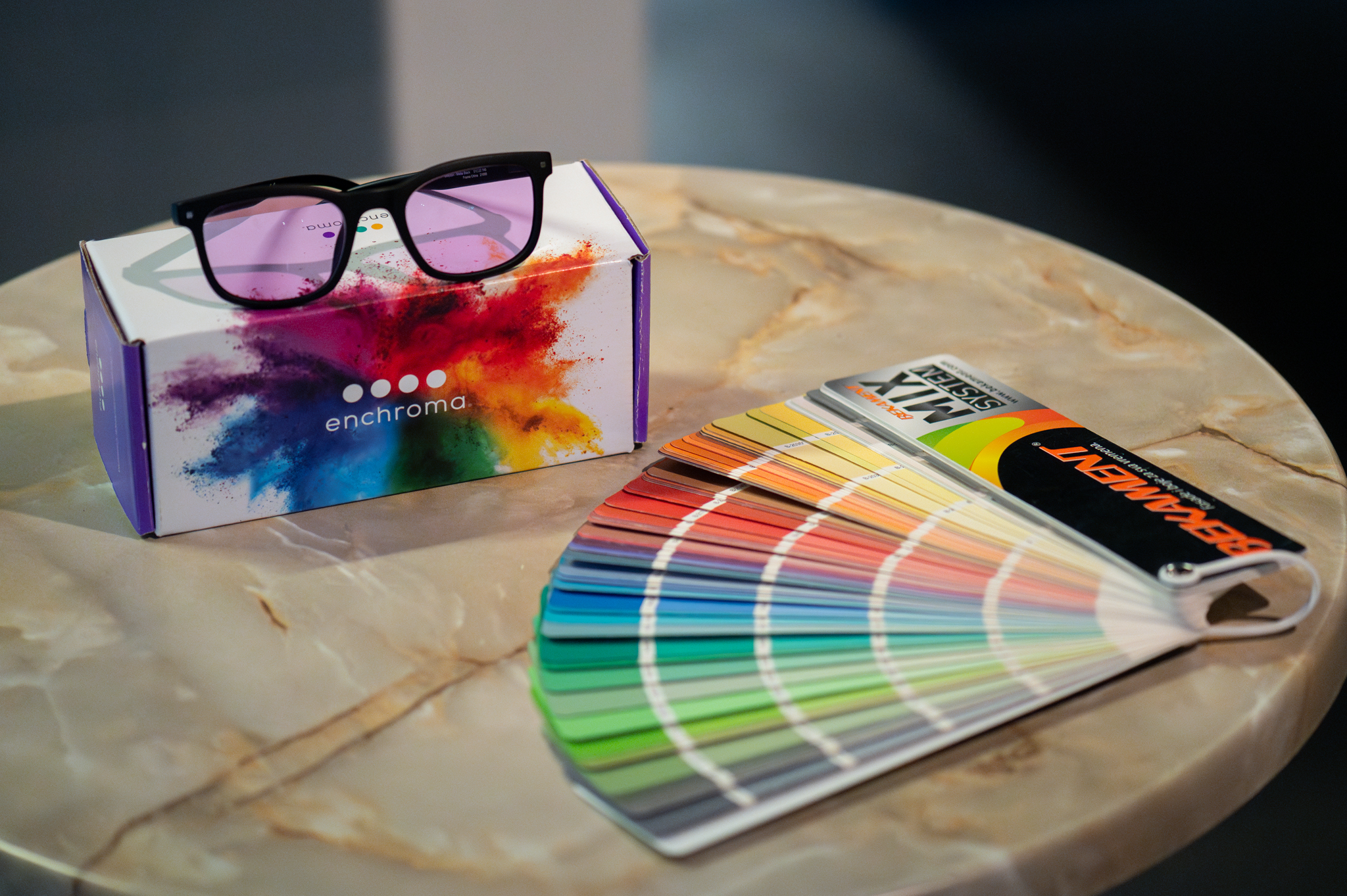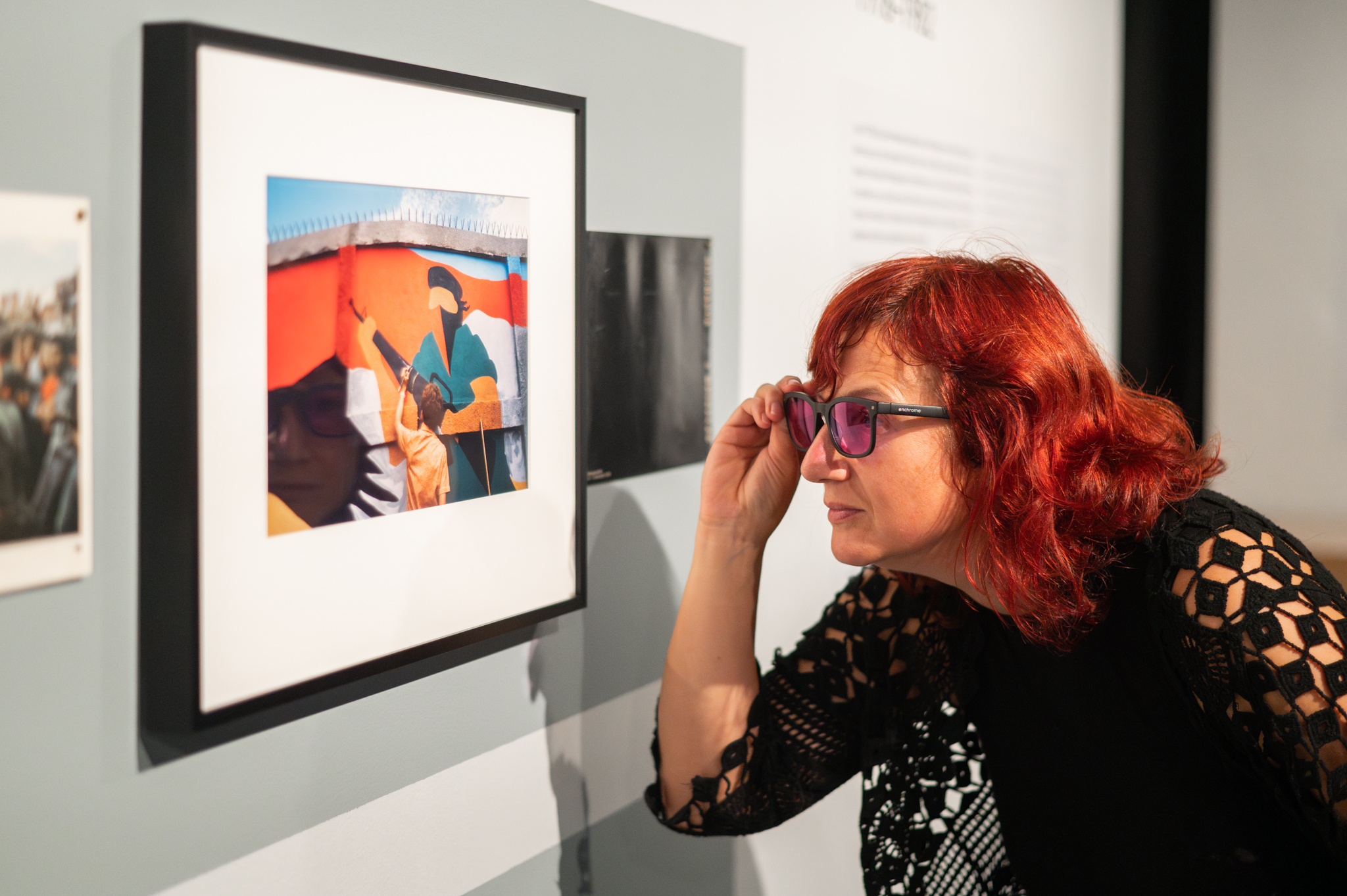Colour Blindness Awareness Month at Jakopič Gallery
We invite individuals with colour blindness to try out glasses that will show them the world in different colours, and others to find out more about colour blindness.
At Jakopič Gallery, our commitment to enhancing accessibility and welcoming diverse audiences is unwavering, as we strive to offer the broadest possible spectrum of art experiences, expanding our perception of the world. That's why we are excited to embrace the opportunity to participate in a campaign dedicated to raising awareness about color blindness, which kicked off at the beginning of the month, in connection with the 6 September - the anniversary of the birth of John Dalton, the pioneer of daltonism. We aim to provide individuals with color vision deficiencies a full and immersive exhibition experience, making us the first gallery in Slovenia to do so. At the same time, we invite the general public to visit our gallery and experience a different way of perceiving artworks through practical examples.

Many institutions around the world, including museums and galleries, libraries and schools, are joining the Colour Blindness Awareness Month, initiated by EnChroma in September. The aim of the month is to educate visitors or communities about how colour vision deficiency affects individuals in their daily lives, whether at work or at school, or when fully enjoying colours in nature or admiring works of art.
As photography is an art that imitates real life, we at the Jakopič Gallery believe that a visit to the photography exhibition with special glasses will certainly be an interesting experience for the colour-blind, as it will enable them to see the colours in the exhibited photographs almost in the same way as those individuals who do not have any major difficulties in perceiving the colour spectrum.
Visit us and ask for specialised EnChroma glasses at our information desk. We invite you to put on the glasses and observe what happens to your perception. At the end of the Susan Meiselas: Mediations exhibition*, we will draw two lucky visitors who will receive the glasses as a gift. To enter the draw, complete the free colour blind test and share your viewing experience with us through a note in the gallery's guestbook or via social media.

We also invite individuals who want to learn more about colour blindness to visit the gallery. For the general public, we will use the photographs of socially engaged photographer Susan Meiselas to show the difference in colour perception according to different types of colour blindness. We invite you to think more broadly about the role of colour in our perception of the world, about who it is that sees "right" (given that people with "normal" vision also perceive colours differently) and about the importance of a wider debate on colour blindness.
Photo by Susan Meiselas (Marketplace, Diriamba, Nicaragua, June 1978) in the original (left) and as seen by individuals with tritanopia (right).
*The campaign will run in our gallery until the Susan Meiselas: Mediations exhibition closes on 22 October 2023.
More about colour blindness
Colour blindness, also known as daltonism, is a reduced ability to distinguish between certain colours. International Colour Blindness Awareness Month is celebrated every year in September, commemorating the birthday of John Dalton (1766-1844), a renowned scientist recognized for his research on colour blindness. His fascination with the subject was sparked by the unique way he and his brother perceived colours, differing from the majority of people.
Colour blindness can be hereditary, meaning it's passed down through families due to genetic mutations. In other cases, it can be acquired due to eye diseases, aging, or exposure to certain chemicals.
This condition is more common than you might think. It affects one in 12 men (8 per cent) and one in 200 women (0.5 per cent) worldwide, with approximately 350 million people experiencing difficulty perceiving colours. While most people can see more than a million shades, those with colour blindness can see only about 10 per cent of colour shades.
The most common types are red-green colour blindness (protanopia and deuteranopia) and blue-yellow colour blindness (tritanopia). In everyday life, individuals with red-green color blindness may find it challenging to perceive red or green or any colours containing them. Similarly, those with blue-yellow colour blindness struggle with distinguishing between shades of blue and green, as well as differentiating yellow from red.
Living with colour blindness poses unique challenges, from reading traffic lights to choosing ripe fruit or coordinating clothing. Understanding this condition is crucial for creating an inclusive community that supports those with colour blindness.